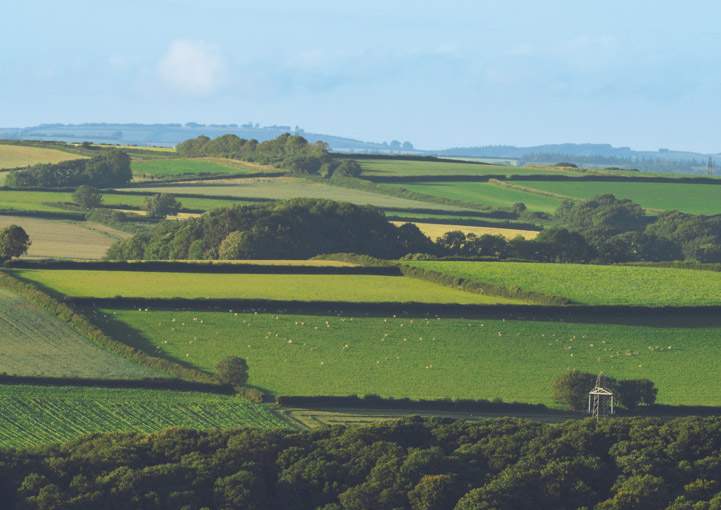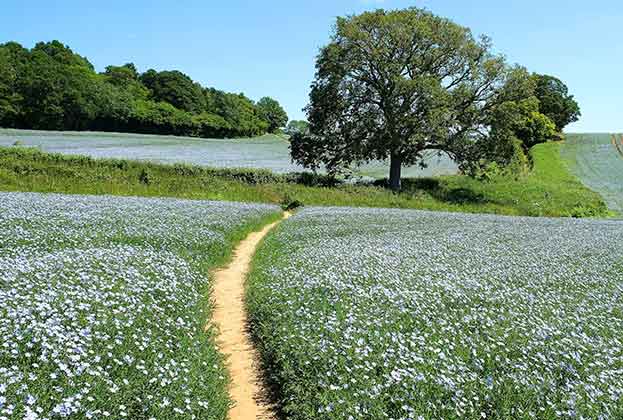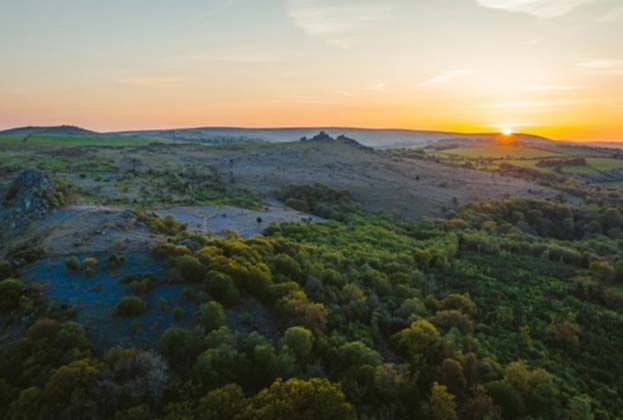A step change in farmland supply suggests it is set to increase further
There was a step change in the supply of lowland farmland onto the public market in Great Britain last year; 20% more land was offered than in 2022 and 15% more than the average for the past five years. In total, 157,200 acres were marketed during 2023. While the recovery from recent lows is notable, in recent history, transaction levels have typically been higher. For example, between 2003 and 2016 (after foot-and-mouth disease and before Brexit), an average of 162,000 acres per year were traded, varying from 139,000 to 201,000 per annum. This suggests there is potential for supply to increase further.
ENGLAND
Supply in England exceeded 100,000 acres for the first time since 2018, with a total of 115,500 acres brought to the open market. Availability was particularly high in the East Midlands and North of England, and whilst in some regions supply was below the five-year average, it was by no more than 10% (Figure 1). There were more opportunities to purchase smaller blocks of land, availability of bare 50–100-acre properties exceeded the five-year average by 60%. These sales were often due to death or succession as well as a few driven by debt.
Despite the improved overall availability, there were relatively few opportunities in many areas to purchase good quality commercial-scale blocks of land, equipped farms and other highly sought-after properties (Figure 2) – this is good news for vendors with properties that fit the bill, but it also means buyers need to be flexible in their property requirements.
Buyers were mostly neighbouring farmers or local Business Asset Rollover Relief (BARR) motivated buyers. Consequently, interest was strongest for larger blocks of bare arable land and weaker for properties with multiple dwellings. Rollover relief motivated buyers were particularly active in the West Midlands but less active than historically seen in counties such as Oxfordshire. Throughout 2023 prices achieved for properties varied and were influenced by factors including location, scarcity and the specific characteristics and assets of the property. At a regional level, values generally increased during the first half of the year but softened in some areas towards the latter part of the year, potentially as higher interest rates reduced the buying power of neighbouring farmers.

SCOTLAND
Both the farmland and estate markets in Scotland continue to be short of stock. In total, 26,100 acres were marketed, which is a similar acreage to the last two years. There is good interest in commercial, well-equipped farms from investors and those with rollover funds available. Farmland values in Scotland increased by an average of 31% in 2021 as interest from afforestation-focused buyers had an inflationary impact on land values across the board. Since then, farmland values have remained stable and the market for forestry planting land, which is outside the scope of our farmland value survey, has fallen by 15–25%. Competition for planting land dropped over 2023 as several key buyers became less active whilst they sought to develop large landbanks of previously acquired land. Expectations of tightening the rules around planting better quality land also ended the run on better quality mixed farms, especially in the North East and Borders areas. However, no change has been implemented yet.
WALES
More land traded here in 2023 (15,700 acres) than in any year since 2000 (17,600 acres) as the market surpassed its average for the last five years by over 40%. The average age of farmers is high, and our agents have noticed an increase in the proportion of vendors who are retiring due to a lack of successors.
Due to the industry’s increased pace of restructuring, we expect the area of farmland marketed in Great Britain will continue to increase over the next four years
Andrew Teanby, Associate Director, Rural Research
Pent-up demand for land meant that values continued the upward trend that started in spring 2021 and increased by an average of 23% during the year (Figure 1). The strongest growth was recorded for grade 3 pasture, which is one of the most common farmland types in Wales. Last year, in our Cross Sector forecasts, we noted that farmland in Wales had scope for capital growth due to the proposed Sustainable Farming Scheme, which provides a framework for profitable farm businesses and spreads the benefits of nature-based income streams across all farms. The Welsh government is continuing to develop the scheme and has indicated its approach to calculating mandatory woodland cover requirements will be pragmatic and exclude areas that are physically or legally constrained. Moving forward, supply is expected to increase further, so the rate of value growth is likely to ease as the market finds its equilibrium.
WHAT DO WE EXPECT IN THE NEXT FIVE YEARS?
Nationally, supply has been trending upward for three years following a decline starting in 2019 that was caused by uncertainty over the terms of the UK’s exit from the European Union and the consequent need for the UK government to develop new national agricultural policies. England is ahead in this process, having started withdrawing area-based Basic Payment Scheme payments in 2021 and encouraging farm businesses to evolve by offering productivity-focused capital grants, and latterly launching new environmental schemes. In Wales and Scotland, change has been delayed to provide stability, although the direction of travel in terms of outcomes expected from land will be similar when new schemes are rolled out from 2025 and 2026, respectively. However, farmland supply may not respond to the same extent as in England, where there has been more government focus on encouraging the industry to restructure.
These changes mean farmers are evaluating their options and restructuring. Over the last three years, retirement and change in farming policy have become far more common reasons for farmers selling their farm machinery compared to 2015, when new agricultural policies were not on the horizon (Figure 3). “Sale of the farm” now accounts for a smaller proportion of sales, but using the rise in machinery sales as an indicator, we remain confident that more land will come onto the market. This is because the sale of farmland is one potential outcome following a change in farming policy, tenancy surrender or retirement. Despite the continued challenging economic backdrop, financial issues continue to account for a low proportion of farmland sales.
Due to the industry’s increased pace of restructuring, we expect the area of farmland marketed in Great Britain will continue to increase over the next four years. The market is likely to increase in size more rapidly in the near term before stabilising at around 180,000 acres per year by 2028 (Figure 4). As a result of there being more land available on the market, there will be less inflationary pressure on farmland values.
Read the articles within Spotlight: The Farmland Market below.
.jpg)

